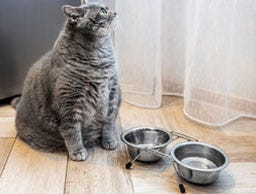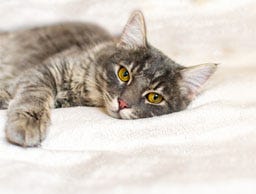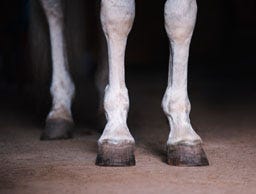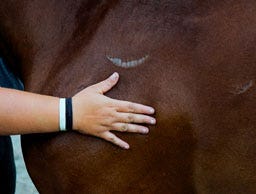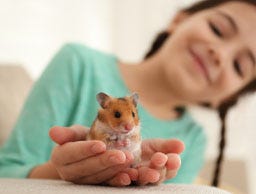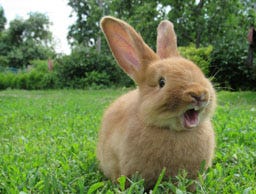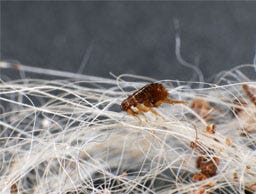The Complete Guide to Rabbit Care
Besides cats and dogs, one of the most popular pets of choice for families across the UK is rabbits. There are approximately 900,000 rabbits being kept as pets, and rising with those owning rabbits growing by 212% since March 2020.
Rabbits are a popular pet due to their small size, variety when it comes to breeds and their unique personalities and intelligence. Owning a rabbit can be an incredibly rewarding experience, and so long as they are properly cared for, they tend to live longer than other small furries such as guinea pigs or hamsters. In this guide, we’re going to discuss the fundamentals of caring for your rabbit so that you can get the absolute most out of your time together.
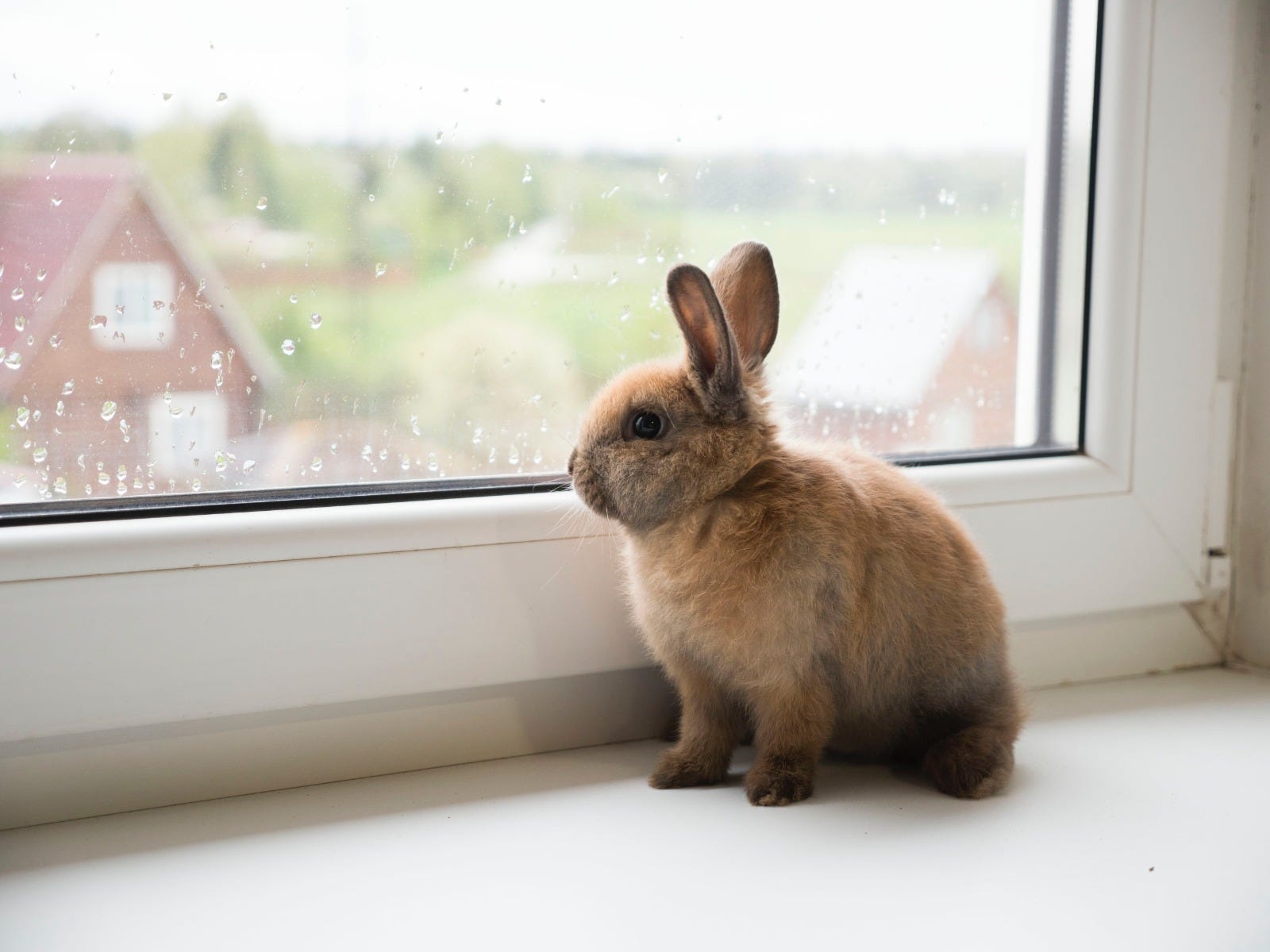
The Basics of How to Look After a Rabbit
Rabbits are more popular than other small furries as they tend to have an average lifespan of 8-12 years depending on their lifestyle, general health and breed. Smaller rabbit breeds tend to have longer life spans (the Miniature Lion Lop which can live up to 18 years if properly cared for) as opposed to larger breeds (the Flemish Giant Rabbit which averages between 8-10 years).
No matter what bunny you choose to bring into your family, there’s no reason they can’t live a happy and fulfilled life given they are properly cared for. To get you started, here are some of the key things you should know about caring for your new bunny:
Enclosure
As with any small furry pet, you always need to ensure that they are kept in a suitable enclosure. This is primarily to help protect them from danger or accidents (especially if you have other, larger pets), but it can also protect your home from their sharp teeth, especially if you’re intending to keep your rabbit indoors. However, if you rabbit-proof your home it is completely feasible to have free-range rabbits indoors.
It’s important to remember that rabbits are social creatures and as such should be kept in matched pairs as a minimum. This means the enclosure you choose for your rabbit will need to accommodate more than just one and provide them with enough space to run, jump, rest and go to the bathroom comfortably.
What enclosure is suitable for your rabbits will depend on their size, but in general, two medium-sized rabbits will need an enclosure such as an outdoor hutch with a run or a cage with an indoor pen that offers a minimum of three by two square metres of space as well as a height of one metre., but the bigger the better! You also need to think about the space once your rabbits are fully grown, as the enclosure must adhere to the “three-hop rule”, which means your rabbits must be able to complete at least 3 full hops when travelling the length of their enclosure. It’s also important that your rabbit can fully stand up, at least in the run section.
Setting Up Your Rabbit’s Enclosure
Your rabbit's home should be well-ventilated, dry and draught free in order to avoid illness, and they should always have access to their exercise run or pen as rabbits are most active overnight and in the late evening/ early morning. If you are keeping outdoor rabbits, thermal and waterproof covers can help to keep your bunnies sheltered.
Rabbits are prey animals and need a place where they can hide when they become anxious or scared, be it tunnels or igloos, and they should have plenty of comfortable and edible bedding such as dust-free bedding hay. Rabbits are also very clean, and if given a litter tray, will happily use it as their sole bathroom spot. You should clean your rabbit’s designated bathroom spot once every day and clean their entire enclosure once a week to ensure they stay clean and healthy.
Free Range Rabbits
Letting your bunnies have the run of a room or the entire house is possible. You can do this with supervision or leave them out all the time. This is great for bunnies as it allows them to exercise as much as they want. However, this isn’t always possible. If you want to have free-range rabbits in the house, make sure there is nothing in their reach. Rabbits will chew wires and practically anything else, as well as knock things over. So make sure everything is out of reach and that they have plenty of toys to chew and play with You can even give your rabbits a cat-scratcher to keep them entertained. For furniture, you’ll want to get an anti-chew spray to discourage them from nibbling.
Free-range rabbits will still need somewhere to hide and sleep, so you will still need an enclosure for them. Even though they are out most of the time, the rabbit cage should still be large enough for three hops across, allow them to stand up, and have a hideaway space.
Diet
Rabbits are grazers meaning in the wild they typically eat only grass and other kinds of vegetation. In order for your rabbit’s digestive system to work properly, they must have either grass and/or hay in their diet as well as constant access to clean, fresh water in either a bowl or rabbit bottle. Each rabbit should have a handful of hay approximately the same size as them which is best kept in a hay rack or hanging basket to keep it clean and off the floor. The easiest way to make sure your bunnies are getting enough hay or grass is to offer them this unlimited.
There are also a number of leafy greens that are perfectly safe for your rabbits to eat (such as kale, broccoli and cabbage) as well as certain fruits and vegetables as a treat, however, hay is far more important for their diet.
If you want to ensure your rabbit is getting a complete and balanced diet, you can also feed them a small amount of high-quality commercial rabbit nuggets so long as they’re high in fibre. In general, rabbits should have approximately 25g of nuggets per kg of body weight. Overfeeding your rabbit nuggets or treats can quickly lead to them becoming overweight and may cause other health problems in future. It is recommended that you don’t feed your rabbits any muesli-style rabbit foods as these lead to selective feeding, and have been connected with health problems in rabbits, such as teeth and digestive problems.
On the whole, your rabbits’ daily diet should consist of:
- 80% grass/hay (feed unlimited)
- 10% leafy greens
- 5% pellets
- 0-5% treats (commercial and/or fruits and sugary vegetables like carrots)
Why is my rabbit eating its own poo?
Rabbits produce two types of droppings. You will notice the hard, dry pellets, but they also produce more moist pellets that they eat. These moist pellets are called cecotropes and are actually an integral part of your rabbit’s diet. Rabbits can’t extract all the nutrients from their food through the first digestion. So they produce these moist pellets to consume and get the vital nutrients, protein and fibre that they didn’t absorb the first time. Don’t be concerned if you catch your rabbit eating them after they’ve been dropped, or even straight from their own bum.
Handling
Rabbits are highly inquisitive and social creatures, so there’s no reason why you can’t build up a trusting relationship with them through patient interactions and handling. It’s important to remember that rabbits are social creatures by nature, and should be kept in pairs at the very least. If you’re not ready to commit to two pets, or financially can’t afford two rabbits, then it could be worth looking into solitary small pet options, such as Syrian hamsters.
As they are prey animals, it’s important to know the right way to both pick up and hold a rabbit, or else they may see you as a threat and form a negative fear response to you being around. But as they are prey animals, they will never enjoy being picked up, so it’s best to interact with them on their own level and only pick them up when needed (and for getting them used to it). As with any animal, it’s about trust and that can take time to build. Socialised younger rabbits are easier to take to being handled by people, whereas older rabbits or rabbits who have not been handled safely or correctly may not want to be held for some time, if ever.
How to Pet Your Rabbit
The best way to gain a rabbit’s trust is to interact with them on their level. Simply sit on the floor with your rabbit. Be quiet and still, letting your rabbit come to you. Sudden movements will cause your bunnies to run, as they do get scared easily. As long as you regularly sit with them regularly and are patient, they will become curious and warm to you. You can encourage this by offering them treats when you’re building up this trust.
Rabbits are social, and so do enjoy interaction and petting. Most will like to be stroked on top of their heads and behind their ears. So when your rabbit has warmed to you and is calm, start by petting them in these areas.
Here are the key things to remember when handling a rabbit:
- Be gentle
- Be patient
- Be safe
How to Safely Pick up a Rabbit
When rabbits are in fearful situations (such as being picked up by a human) it can trigger a fear response in them that displays itself as lots of frantic wriggling to try and be free and back on solid ground. This can quickly lead to the rabbit being dropped, causing damage to their fragile spine or even fatally injuring them. This is why when first trying to pick up your rabbit, you should do so while sitting on the ground so, if they do manage to wriggle free, they don’t have far to fall. Here are some other things to remember when holding your rabbit:
- Hold them firmly, but gently ensuring one hand is supporting their back while the other supports their hind quarters keeping all four of their feet against your body at all times. Do not dangle your rabbit as it can cause injury to their spines.
- Do not hold them too tightly as this can stress your rabbit out and cause them to try and flee. Hold them with enough restraint that they’re secure, but if they don’t want to be held, don’t force them, but gently and quietly put them back on the floor.
- Supervise any children when they are holding a rabbit to make sure they are doing so correctly and not harming the rabbit.
Never pick them up by the ears. This can be incredibly stressful for your rabbit as well as potentially injuring them.
Building trust with your rabbit is all about making them feel safe and secure so you can build up their trust in you. Never force your rabbit into being held if it doesn’t want to and always take into account your rabbit's age, health and temperament before trying to handle them.
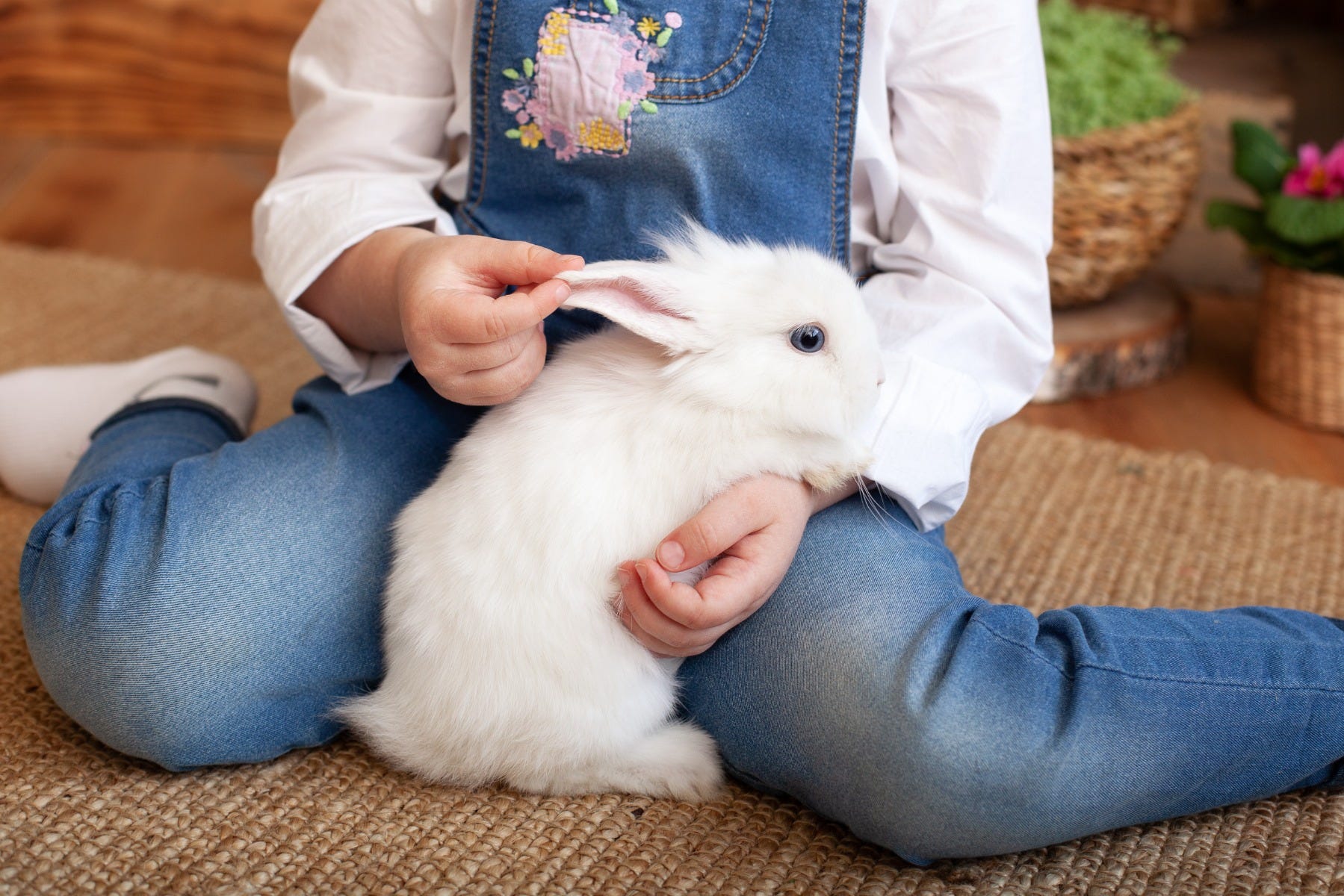
Healthcare
As prey animals, rabbits will not often show signs of pain or illness until it’s too late as a defence mechanism. Rabbits are also more prone to diseases, or even poisoning when living outdoors. This is why it’s important to familiarise yourself with your rabbit’s usual behaviour, keeping them up to date with vaccinations, parasite prevention treatments and vet checkups. Some of the signs your rabbit is ill or injured include:
- Change is behaviour or attitude towards you.
- Changes in appetite or thirst.
- Changes in bowel movements including dropping more or less pellets or diarrhoea.
- Slow movement, fear or hiding.
- Changes in breathing (too fast or too slow).
- Discharge around the eyes or saliva around the mouth
- Changes in skin and coat condition, including unusual moulting, excessive grooming or pulling out their own fur, flaky skin and any signs of blood on or in their fur.
If you notice any of these signs in your rabbit – and remember, they can be very subtle changes – you should consult your vet for further advice.
Health Checks for Rabbits
As well as having your rabbit checked routinely by a vet, you should know how to health check them yourself to ensure everything is as it should be, particularly by regularly checking their eyes, ears, claws and teeth. You should be checking your rabbits:
Front teeth and nails at least once a week as they can grow very quickly. If you notice either of these parts are overgrown or misaligned, you should consult your vet.
Check your rabbit's rear end twice daily for any signs of urine staining or stuck droppings which can attract flies that lay eggs on your rabbit resulting in flystrike, which can be fatal.
Skin and fur and also applying parasite protection as advised by your vet (usually monthly as with the Advantage Spot On Flea Treatment for Small Dogs, Cats and Rabbits). You should also groom your rabbit’s coat regularly and more during moulting seasons. If you're unsure how, speak with your vet.
Dental Care
There are 28 teeth in a rabbit's mouth, although you’ll likely only notice the four large incisors at the very front (though they have 6 incisors in total, a smaller one is found on each side of the upper front incisors, which you might see as well). Much like rodents, rabbit’s teeth continue to grow continuously throughout their life and need to be worn down so they remain at the correct length and don’t cause your rabbit any pain or discomfort. The best ways to ensure your rabbit’s teeth are cared for include:
- Providing them with a high-fibre diet and plenty of things to chew on such as grass, leafy vegetables and nuggets.
- Check their front four teeth regularly at home and have their teeth checked by your vet routinely as well. All it takes is one misaligned tooth to entirely throw your rabbit’s health off course and realignment can only be performed by a trained veterinary practitioner. A vet can also note if your rabbit shows any signs of dental injury or disease.
- Provide safe and suitable toys for them to chew on that don’t have any small parts that could be a choking hazard. The best toys should have smooth edges and be naturally sourced, such as these Burns Willow Chew Sticks, and other gnawing toys.
Enrichment and Exercise
Rabbits are incredibly active, playful and inquisitive pets, and a big part of keeping them healthy is ensuring they have the space and opportunity to properly exercise throughout the day. The best way to do this is by having a permanent fixture on their enclosure that gives them optimum space to run and hop to their heart's content whenever they choose or let them have free-range of a bunny-safe room or even the whole house (if rabbit-proofed). However, if giving them full access to this space isn’t possible because you keep your rabbits indoors, or, for their safety, they are closed into their sleeping quarters at night then you need to make sure they are given access to this space during their most active times:
- Early morning
- Late afternoon
- Overnight (if it's safe to do so)
What is in your rabbits' enclosure is as important as its size, as rabbits need to have things to do and toys to play with throughout the day to keep them entertained and mentally stimulated. Rabbits are intelligent creatures, so toys will help to keep them from getting bored, stressed, or not exercising an appropriate amount which can lead to obesity if not monitored. Fill your rabbit's enclosure with enough toys, a hideaway and even platforms for them to run and explore throughout the day without letting the space get too crowded. They still like to run and even perform what’s known as a ‘Binky’. This is a form of behaviour where a happy rabbit who is stimulated and content with its surroundings will jump with all four feet off the ground and twist in mid-air in a playful and adorable manner. Other signs that your rabbit is happy and content include:
- Lying with a relaxed posture and all four feet tucked beneath them.
- Lying with their body relaxed and extended with their front legs poking forward, and their back legs spread out behind them.
- Sleeping in what is known as the “Flop” - a rabbit that feels completely safe and secure will throw itself onto its side to sleep. This can be quite alarming and they look like they are dead when sleeping in this position!
To keep your rabbit entertained, it’s important to give them the opportunity to perform their natural behaviours such as chewing, digging, chin marking and investigating. This doesn’t mean you need to go out and spend a fortune on rabbit toys, in fact, they’re just as happy playing with cardboard and shredded paper (just make sure no harmful chemicals have been used) as they are wooden enrichment toys, although buying them the odd rabbit-safe toy will certainly be a plus.
It’s important to change up your rabbit’s enclosure and toy selection every once in a while to remove any thing they’ve chewed to an unsafe level (anything small enough for them to swallow or showing sharp edges) and give them a new environment to explore. This will keep them from becoming bored, stressed or even angry. If you’re not sure if your rabbit is content, then keep an eye on their behaviour. While every rabbit is unique and has its own set of quirks, the general signs of a stressed or unhappy rabbit include:
- Crouching low to the ground with body tensed, ears wide apart and large, dilated pupils.
- Spending a lot of time hiding away.
- Thumping their back legs on the ground
- Standing tense with their mouth open, ears back and teeth bared.
By knowing what each of your rabbit’s behaviours means, you can be better equipped for how best to handle them. If they’re worried, try and find the root cause. This could be anything from other pets or children in the home, loud noises such as building work, or even just that they are shy and would rather not be handled.
Should You Spay and Neuter Rabbits?
Spaying or neutering refers to a surgical procedure undertaken to prevent male or female rabbits from reproducing. For males, this means their testicles are removed and for females, the ovaries and womb are removed.
There are a number of benefits for spaying and neutering your rabbits, including:
- No risk of accidental pregnancy (especially if you are keeping a mixed pair or group of rabbits). As a female and a male are often the best paring, this is highly recommended, otherwise, you will get more rabbits than you bargained for!
- Improves socialisation.
- Reduces the risk of cancer, especially in females who are prone to uterine cancers early in life. It can also reduce the risk of womb infections or mammary (breast tissue) cancers in females.
- Better tempers, particularly in male rabbits as the testicles are the main source of the hormone testosterone. After neutering, male rabbits tend to be less aggressive to other rabbits and won’t try to chase or mount their companion.
- Better house training as neutered rabbits are less likely to exhibit scent-marking behaviours like spraying.
Reduces the risk of false pregnancies in females which can cause hormonal behaviours such as nest-making and aggression towards owners and other rabbits.
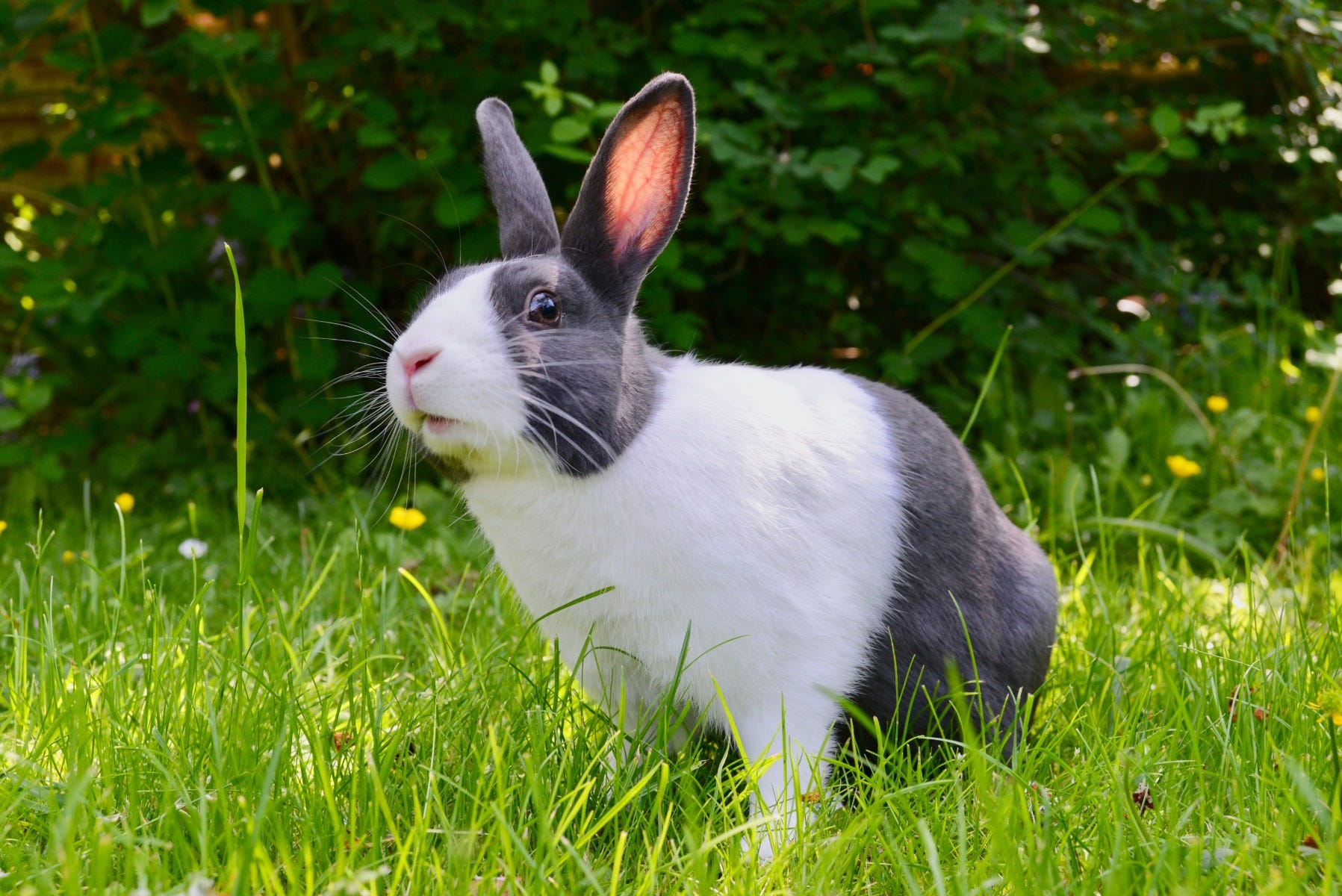
Rabbits as Pets
With the proper care and attention, rabbits can make exceptionally rewarding pets who love to jump and flop around and just be adorable in general! Always remember to keep your rabbits up to date with any health checks and vaccinations, and there’s no reason they can’t live a long, happy life with you by their side.
Rabbits are highly social, intelligent and active. In general, they need plenty of space to run, toys to stop them from getting bored and should be kept in at least a pair to meet their emotional needs. Their diet is also important, as it not only gives them the nutrients they need but helps to keep their teeth worn down. For this, they need plenty of fibre in the form of grass or hay, as well as leafy greens and pellets. They can be shy creatures, but once you have gained their trust with a little patience, they are friendly and loving.
If you’d like advice on owning rabbits or if they’re the right pet for you, speak with your vet or get in touch with us and our friendly team will be more than happy to help.
This post is an opinion and should only be used as a guide. You should discuss any change to your pet’s care or lifestyle thoroughly with your vet before starting any program or treatment.













